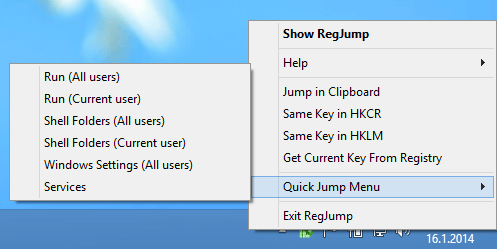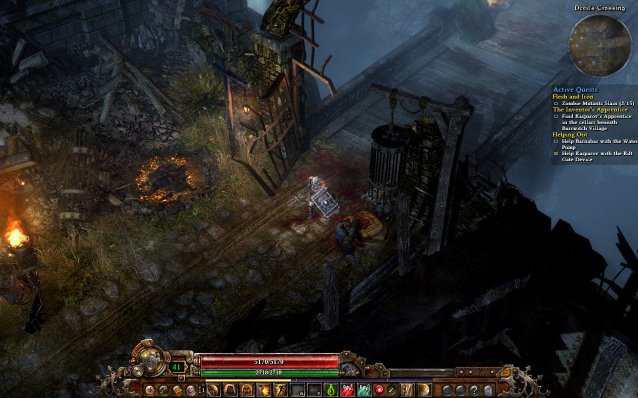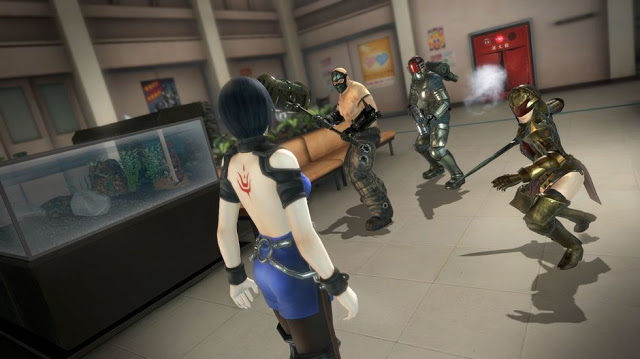

Game Rant’s Rob Keyes reviews Syndicate
Electronic Arts only announced the reboot of Syndicate from Starbreeze Studios in September of 2011, and two weeks before they launch Mass Effect 3, they’ve released the sci-fi first-person shooter with its own similar four-player, objective-based cooperative mode.
Syndicate is the reimagining of the 1999 game of the same name. It takes place in the year 2069 where massive corporations rule the world and their consumer-bases are embedded with neural chip implants that allow them to interact with every part of daily life. Do Syndicate’s near-future story and gameplay mechanics let is stand apart in the crowded FPS genre? Read our review to find out.
Ever since gameplay footage of Syndicate was first released, is has been oft compared to Eidos Montreal’s 2011 hit Deus Ex: Human Revolution and rightly so. Both games take place in a near-future where massive rival tech corporations duke it out for control, both share a similar visual style and aesthetic, and the stories of both boil down to the problems of humans being augmented with technology and how it can be used for good or evil.
Where Deus Ex: Human Revolution offers stealth options and conversation trees for its protagonist Adam Jensen – an interesting character who carries players through the story – Syndicate puts players in the shoes of a non-speaking blank slate of a character with no opportunities to make decisions in-game. Syndicate is as linear as it gets, but what it lacks in a memorable story and compelling characters, it makes up for in polished and top-of-the-line combat and gameplay, both in its single-player campaign and its multiplayer offerings.
In Syndicate’s story campaign, players step into the shoes of Miles Kilo (pictured above), a prototype EuroCorp agent, gifted with the latest prototype DART 6 bio-chip. It is this chip that grants the player superhuman abilities from regenerative health to a variety of breach abilities which allow the player to interact with most tech-based objects and take advantage of enemies by using their own bio-chips against them. The DART also adds the single-player game’s only RPG element: the ability to improve/add functions and stats by collecting chips off certain characters – by extracting it out of their head – in the game whenever the DART 6 sees an opportunity for an upgrade.
The HUD and how the DART system reacts and processes everything in the environment is as intuitive as it is intriguing, and its sleek design meshes perfectly with the core gameplay. Syndicate is first and foremost a hard-hitting shooter but the addition of three unique and easy-to-use breach applications add a dynamic that can alter any firefight in the player’s favor, should they use their abilities tactically.
And use them tactically, they’ll certainly need to. Syndicate wastes no time in throwing players into the action. A quick bit of exposition explains the background and setting of the game, and a few tutorials in the first act introduce players to to the three breach abilities, before they’re off on an action-adventure involving conspiracy and rival Syndicates, all centered around the bio-chip technology.
The weapons and gunplay of the title are what will keep players coming back, especially in the game’s co-op mode. Gun fights sound and look amazing, and most weapons come with a useful secondary feature that allows players to switch between semi-automatic long-range fire and full auto, or other functions like an under-slung grenade launcher.
What may break the experience at times in combat scenarios is the game’s AI. Enemies often run out and into the open, or charge at the player in groups, begging for a melee takedown. To draw another comparison to Deus Ex: Human Revolution, this game also suffers from one major flaw in the AI/enemy departement: boss battles.
There are quite a few scenarios when the player will go toe-to-toe with an enemy agent(s) and these skirmishes devolve into repeating breach sequences or running in circles around objects in between unloading an inordinate amount of ammunition into a boss at extreme close range. They aren’t nearly as problematic as Deus Ex, but a few of the Syndicate boss battles are an exercise in frustration where players will likely die a few times even on the normal difficulty until they figure out the right (repetitive) strategy.
Like any other part of the campaign however, there’s just no other way around it. The level designs are as linear as the game’s basic story. Most of the environments contain doors and windows that gamers cannot break through, despite the player’s ability to knock down walls and break through floor grates. There’s only one way to go in all instances, and it’s up to the player to figure out how to proceed through that one path. Approaching a combat scenario therefore becomes a run and gun affair while using cover – despite having the ability to locate enemies behind obstacles and through darkness, the player cannot interact with the environment (i.e. shooting out the lights) to take full advantage of these abilities.
As a mindless overpowered soldier, there are no repercussions for immoral actions. And whether it be killing civilians and/or working for a corporation with an obviously ill-intentioned leader, choice has no effect on the game or characters and there are no options in that respect either.
The story simply serves to move the player from scenario to scenario, but does little to engage gamers. Players will be driven solely by how fun the gameplay is and how well the core mechanics work. Starbreeze Studios designed the game to make players feel every step, with movement and obstacle traversal that is fluid, natural and just plain cool looking. Players can run and slide, using cover without binding themselves to an object, and initiate incredibly satisfying melee takedowns – all of which are fully rendered in first-person, meaning players see everything Kilo does with his hands and legs, and I mean everything.
The game’s co-operative mode – which pleasantly does not require an EA Online Pass – is entirely separate from the main campaign, allowing up to four players to join together (only online) to form a team of agents, reminiscent of the original Syndicate, even using some of the same map designs from the original. And just like the game that started it all, this multiplayer mode is all about progression.
There are nine maps in the co-op mode, which sees players working for a new corporation fighting against the three Syndicates featured in the single-player campaign’s story. This multiplayer mode is the highlight of Syndicate as it features a more in-depth and replayable version of what the single-player game offers. There are far more chip upgrades to unlock, 12 breach applications instead of the solo story’s three, and weapons can be individually upgraded.
The co-op mode forces players to work together by allowing them to heal and revive each other on the fly, and since co-op is mission-based, some of the objectives require all the team members to do their part. Outside of the actual gameplay, players can form a Syndicate (clan) of their own, setting goals and tasks for their group to achieve. There are challenges and contracts, and even a stock market of sorts which illustrates the Syndicate’s performance over time.
Despite its flaws, Syndicate raises the bar in what gamers should expect from first-person shooters in terms of presentation and gameplay mechanics. It could have been crafted from the ground-up just to focus on its co-op features and we’d love to see a sequel build upon this foundation.
Syndicate is available on the PC, PS3 and Xbox 360. Game Rant played the Xbox 360 version for this review.
–
Follow me on Twitter @rob_keyes.




 Grim Dawn Alpha Preview
Grim Dawn Alpha Preview Deception 4: The Nightmare Princess PS VITA review
Deception 4: The Nightmare Princess PS VITA review TitanFall: Fix for Screen flicker, Low FPS, Slow Graphics, lagging on Xbox One/360
TitanFall: Fix for Screen flicker, Low FPS, Slow Graphics, lagging on Xbox One/360 Which Websites Are Most Likely to Infect You with Malware?
Which Websites Are Most Likely to Infect You with Malware? How to update Playstation VITA firmware via Wi-Fi
How to update Playstation VITA firmware via Wi-Fi